本节内容:
1.Socket语法及相关
2.SocketServer实现多并发
Socket语法及相关
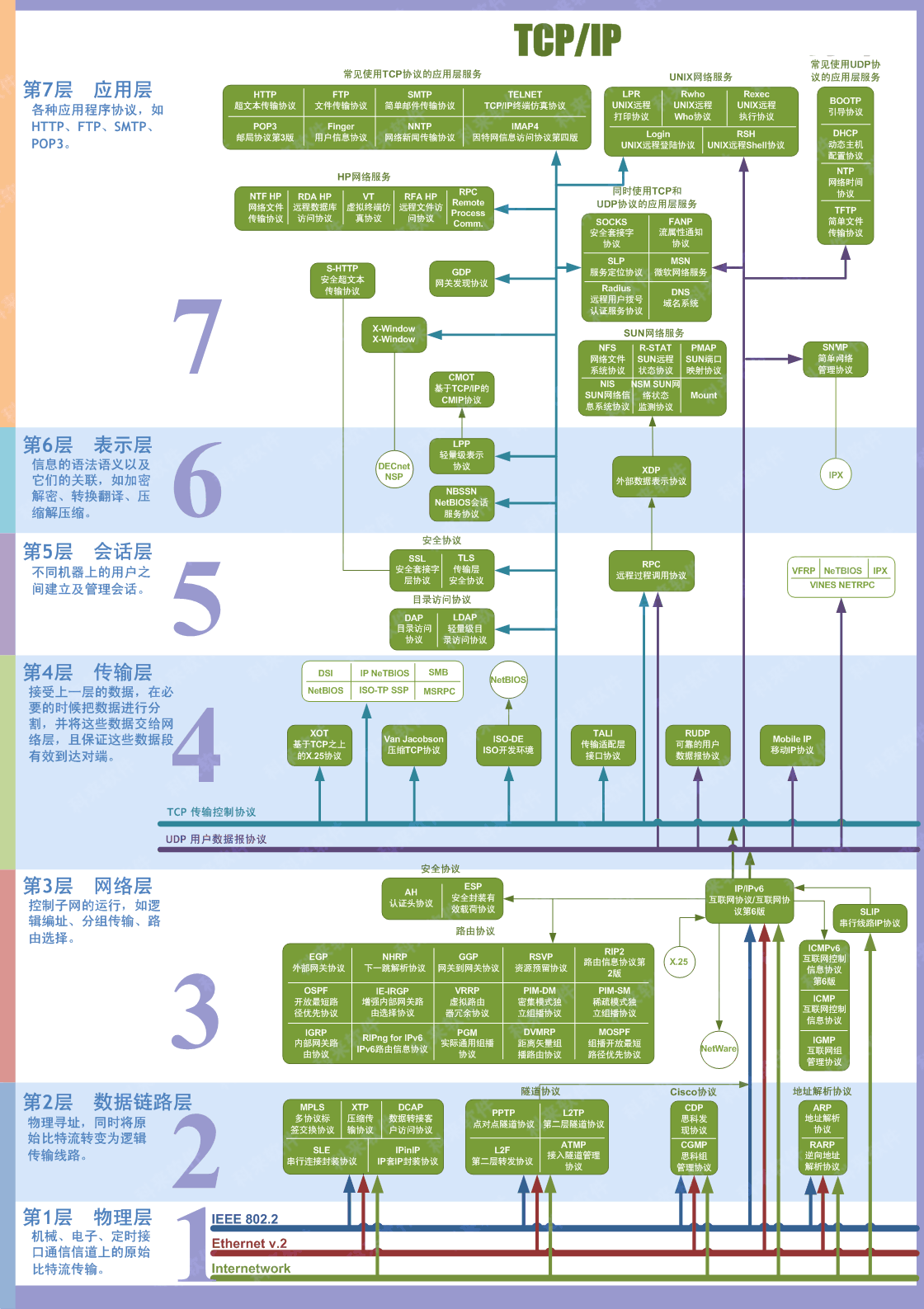
socket 概念
socket本质上就是在2台网络互通的电脑之间架设一个通道,两台电脑通过这个通道来实现数据的互传。我们知道网络,通信都是基于ip+port方能定位到目标的具体机器上的具体服务,操作系统有0~65535个端口,没个端口都可以独立对外提供服务,如果把一个公司比作一台电脑,那么公司的总机号码就相当于ip地址,每个分机就相当于端口,你想找到某个人,必须先打电话到总机再转分机。
建立一个socket必须至少有2端,一个是服务器端,一个是客户端,服务端被动等待并接收请求,客户端主动发起请求,连接建立,双方互发数据。
大致如下图:
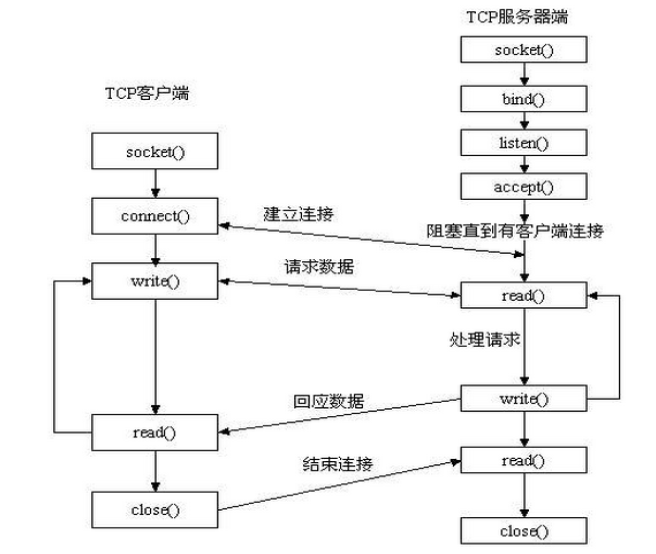
然后。。。下面这段都是抄的,但是应该有用。。。0.0
A network socket is an endpoint of a connection across a computer network. Today, most communication between computers is based on the Internet Protocol; therefore most network sockets are Internet sockets. More precisely, a socket is a handle (abstract reference) that a local program can pass to the networking application programming interface (API) to use the connection, for example "send this data on this socket". Sockets are internally often simply integers, which identify which connection to use.
For example, to send "Hello, world!" via TCP to port 80 of the host with address 1.2.3.4, one might get a socket, connect it to the remote host, send the string, then close the socket:
Socket socket = getSocket(type = "TCP") connect(socket, address = "1.2.3.4", port = "80") send(socket, "Hello, world!") close(socket)
A socket API is an application programming interface (API), usually provided by the operating system, that allows application programs to control and use network sockets. Internet socket APIs are usually based on the Berkeley sockets standard. In the Berkeley sockets standard, sockets are a form of file descriptor (a file handle), due to the Unix philosophy that "everything is a file", and the analogies between sockets and files: you can read, write, open, and close both. In practice the differences mean the analogy is strained, and one instead use different interfaces (send and receive) on a socket. In inter-process communication, each end will generally have its own socket, but these may use different APIs: they are abstracted by the network protocol.
A socket address is the combination of an IP address and a port number, much like one end of a telephone connection is the combination of a phone number and a particular extension. Sockets need not have an address (for example for only sending data), but if a program binds a socket to an address, the socket can be used to receive data sent to that address. Based on this address, internet sockets deliver incoming data packets to the appropriate application process or thread.
Socket Families(地址簇)
socket.AF_UNIX unix本机进程间通信
socket.AF_INET IPV4
socket.AF_INET6 IPV6
These constants represent the address (and protocol) families, used for the first argument to socket(). If the AF_UNIX constant is not defined then this protocol is unsupported. More constants may be available depending on the system.
Socket Types
socket.SOCK_STREAM #for tcp
socket.SOCK_DGRAM #for udp
socket.SOCK_RAW #原始套接字,普通的套接字无法处理ICMP、IGMP等网络报文,而SOCK_RAW可以;其次,SOCK_RAW也可以处理特殊的IPv4报文;此外,利用原始套接字,可以通过IP_HDRINCL套接字选项由用户构造IP头。
socket.SOCK_RDM #是一种可靠的UDP形式,即保证交付数据报但不保证顺序。SOCK_RAM用来提供对原始协议的低级访问,在需要执行某些特殊操作时使用,如发送ICMP报文。SOCK_RAM通常仅限于高级用户或管理员运行的程序使用。
socket.SOCK_SEQPACKET #废弃了
These constants represent the socket types, used for the second argument to socket(). More constants may be available depending on the system. (Only SOCK_STREAM and SOCK_DGRAM appear to be generally useful.)
Socket 方法
socket.socket(family=AF_INET, type=SOCK_STREAM, proto=0, fileno=None)
Create a new socket using the given address family, socket type and protocol number. The address family should be AF_INET (the default), AF_INET6, AF_UNIX, AF_CAN or AF_RDS. The socket type should beSOCK_STREAM (the default), SOCK_DGRAM, SOCK_RAW or perhaps one of the other SOCK_ constants. The protocol number is usually zero and may be omitted or in the case where the address family is AF_CAN the protocol should be one of CAN_RAW or CAN_BCM. If fileno is specified, the other arguments are ignored, causing the socket with the specified file descriptor to return. Unlike socket.fromfd(), fileno will return the same socket and not a duplicate. This may help close a detached socket using socket.close().
socket.socketpair([family[, type[, proto]]])
Build a pair of connected socket objects using the given address family, socket type, and protocol number. Address family, socket type, and protocol number are as for the socket() function above. The default family is AF_UNIX if defined on the platform; otherwise, the default is AF_INET.
socket.create_connection(address[, timeout[, source_address]])
Connect to a TCP service listening on the Internet address (a 2-tuple (host, port)), and return the socket object. This is a higher-level function than socket.connect(): if host is a non-numeric hostname, it will try to resolve it for both AF_INET and AF_INET6, and then try to connect to all possible addresses in turn until a connection succeeds. This makes it easy to write clients that are compatible to both IPv4 and IPv6.
Passing the optional timeout parameter will set the timeout on the socket instance before attempting to connect. If no timeout is supplied, the global default timeout setting returned by getdefaulttimeout() is used.
If supplied, source_address must be a 2-tuple (host, port) for the socket to bind to as its source address before connecting. If host or port are ‘’ or 0 respectively the OS default behavior will be used.
socket.getaddrinfo(host, port, family=0, type=0, proto=0, flags=0) #获取要连接的对端主机地址
sk.bind(address)
sk.bind(address) 将套接字绑定到地址。address的格式取决于地址簇,在AF_INET下,以元组(host,port)的形式表示地址。
sk.listen(backlog)
开始监听传入连接。backlog是指实例化对象sk的最大连接数量。
例如sk.listen(5),表示内核已经接到了连接请求,但服务器还没有调用accept进行处理的连接个数最大为5。这个值不能无限大,因为要在内核中维护连接队列
sk.setblocking(bool)
是否阻塞(默认True),如果设置False,那么accept和recv时一旦无数据,就会报错。
sk.accept()
接受连接并返回conn,address;其中conn是新的套接字对象,可以用来交互数据,address是连接客户端的地址。
接收TCP客户的连接(阻塞式)等待连接的到来
sk.connect(address)
连接到address处的套接字。一般,address的格式为元祖(hostname,port),如果连接出错,则返回socket.error错误。
sk.connect_ex(address)
同上,只不过会有返回值,连接成功返回0,失败时返回编码,例如:10061
sk.close()
关闭套接字
sk.recv(bufsize[,flag])
接受套接字的数据。数据以字符串形式返回,bufsize指定最多可以接受的数量。flag提供有关消息的其他信息,正常可以忽略。
sk.recvfrom(bufsize[.flag])
与recv()类似,但返回值是(data,address)。其中data是包含接收数据的字符串,address是发送数据的套接字地址。
sk.send(string[,flag])
将string中的数据发送到连接的套接字。返回值是要发送的字节数量,该数量可能小于string的字节大小。即:可能未将指定内容全部发送。
sk.sendall(string[,flag])
将string中的数据发送到连接的套接字,但在返回之前会尝试发送所有数据。成功返回None,失败则抛出异常。
内部通过递归调用send,将所有内容发送出去。
sk.sendto(string[,flag],address)
将数据发送到套接字,address是形式为(ipaddr,port)的元组,指定远程地址。返回值是发送的字节数。该函数主要用于UDP协议。
sk.settimeout(timeout)
设置套接字操作的超时期,timeout是一个浮点数,单位是秒。值为None表示没有超时期。一般,超时期应该在刚创建套接字时设置,因为它们可能用于连接的操作(如 client 连接最多等待5s )
sk.getpeername()
返回连接套接字的远程地址。返回值通常是元组(ipaddr,port)。
sk.getsockname()
返回套接字自己的地址。通常是一个元组(ipaddr,port)
sk.fileno()
套接字的文件描述符
socket.sendfile(file, offset=0, count=None)
发送文件 ,但目前多数情况下并无什么卵用。
SocketServer
The socketserver module simplifies the task of writing network servers.
There are four basic concrete server classes:
- class
socketserver.TCPServer(server_address, RequestHandlerClass, bind_and_activate=True) -
This uses the Internet TCP protocol, which provides for continuous streams of data between the client and server. If bind_and_activate is true, the constructor automatically attempts to invoke
server_bind()andserver_activate(). The other parameters are passed to theBaseServerbase class.
- class
socketserver.UDPServer(server_address, RequestHandlerClass, bind_and_activate=True) -
This uses datagrams, which are discrete packets of information that may arrive out of order or be lost while in transit. The parameters are the same as for
TCPServer.
- class
socketserver.UnixStreamServer(server_address, RequestHandlerClass, bind_and_activate=True) - class
socketserver.UnixDatagramServer(server_address, RequestHandlerClass,bind_and_activate=True) -
These more infrequently used classes are similar to the TCP and UDP classes, but use Unix domain sockets; they’re not available on non-Unix platforms. The parameters are the same as for
TCPServer.
These four classes process requests synchronously; each request must be completed before the next request can be started. This isn’t suitable if each request takes a long time to complete, because it requires a lot of computation, or because it returns a lot of data which the client is slow to process. The solution is to create a separate process or thread to handle each request; the ForkingMixIn and ThreadingMixIn mix-in classes can be used to support asynchronous behaviour.
There are five classes in an inheritance diagram, four of which represent synchronous servers of four types:
+------------+
| BaseServer |
+------------+
|
v
+-----------+ +------------------+
| TCPServer |------->| UnixStreamServer |
+-----------+ +------------------+
|
v
+-----------+ +--------------------+
| UDPServer |------->| UnixDatagramServer |
+-----------+ +--------------------+
Note that UnixDatagramServer derives from UDPServer, not from UnixStreamServer — the only difference between an IP and a Unix stream server is the address family, which is simply repeated in both Unix server classes.
- class
socketserver.ForkingMixIn - class
socketserver.ThreadingMixIn -
Forking and threading versions of each type of server can be created using these mix-in classes. For instance,
ThreadingUDPServeris created as follows:class ThreadingUDPServer(ThreadingMixIn, UDPServer): passThe mix-in class comes first, since it overrides a method defined in
UDPServer. Setting the various attributes also changes the behavior of the underlying server mechanism.
- class
socketserver.ForkingTCPServer - class
socketserver.ForkingUDPServer - class
socketserver.ThreadingTCPServer - class
socketserver.ThreadingUDPServer -
These classes are pre-defined using the mix-in classes.
Request Handler Objects
class
socketserver.BaseRequestHandlerThis is the superclass of all request handler objects. It defines the interface, given below. A concrete request handler subclass must define a new
handle()method, and can override any of the other methods. A new instance of the subclass is created for each request.setup()-
Called before the
handle()method to perform any initialization actions required. The default implementation does nothing.
handle()-
This function must do all the work required to service a request. The default implementation does nothing. Several instance attributes are available to it; the request is available as
self.request; the client address asself.client_address; and the server instance asself.server, in case it needs access to per-server information.The type of
self.requestis different for datagram or stream services. For stream services,self.requestis a socket object; for datagram services,self.requestis a pair of string and socket.
socketserver.TCPServer Example
Server:
import socketserver
class MyTCPHandler(socketserver.BaseRequestHandler):
""""""
def handle(self):
while True:
self.data = self.request.recv(1024).strip()
print("recv:".format(self.client_address[0]))
print(self.data)
self.request.sendall(self.data.upper())
if __name__ == "__main__":
Host, Port = "localhost", 9999
server = socketserver.TCPServer((Host, Port), MyTCPHandler)
server.serve_forever()
Client:
import socket
host, port = "localhost", 9999
sock = socket.socket(socket.AF_INET,socket.SOCK_STREAM)
while True:
data = input(">>>:").strip()
sock.connect((host, port))
sock.send(data.encode())
recv = sock.recv(1024)
print(recv)
上面的例子,我们可以实现一个简单的socket数据传输交互,但是确没有实现并发。其实只需要在server端改一下就好了
将下面这句实例化 server = socketserver.TCPServer((Host, Port), MyTCPHandler) 改为: server = socketserver.ThreadingTCPServer((Host, Port), MyTCPHandler)
这样就可以实现并发了,服务器接收客户端的数据并进行并发处理。
线程与进程
首先我们引入一下操作系统的发展史:
手工操作(无操作系统)
1946年第一台计算机诞生--20世纪50年代中期,还未出现操作系统,计算机工作采用手工操作方式。
手工操作
程序员将对应于程序和数据的已穿孔的纸带(或卡片)装入输入机,然后启动输入机把程序和数据输入计算机内存,接着通过控制台开关启动程序针对数据运行;计算完毕,打印机输出计算结果;用户取走结果并卸下纸带(或卡片)后,才让下一个用户上机。

手工操作方式两个特点:
(1)用户独占全机。不会出现因资源已被其他用户占用而等待的现象,但资源的利用率低。
(2)CPU 等待手工操作。CPU的利用不充分。
20世纪50年代后期,出现人机矛盾:手工操作的慢速度和计算机的高速度之间形成了尖锐矛盾,手工操作方式已严重损害了系统资源的利用率(使资源利用率降为百分之几,甚至更低),不能容忍。唯一的解决办法:只有摆脱人的手工操作,实现作业的自动过渡。这样就出现了成批处理。
批处理系统
批处理系统:加载在计算机上的一个系统软件,在它的控制下,计算机能够自动地、成批地处理一个或多个用户的作业(这作业包括程序、数据和命令)。
联机批处理系统
首先出现的是联机批处理系统,即作业的输入/输出由CPU来处理。
主机与输入机之间增加一个存储设备——磁带,在运行于主机上的监督程序的自动控制下,计算机可自动完成:成批地把输入机上的用户作业读入磁带,依次把磁带上的用户作业读入主机内存并执行并把计算结果向输出机输出。完成了上一批作业后,监督程序又从输入机上输入另一批作业,保存在磁带上,并按上述步骤重复处理。
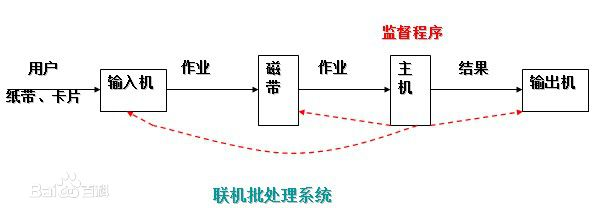
监督程序不停地处理各个作业,从而实现了作业到作业的自动转接,减少了作业建立时间和手工操作时间,有效克服了人机矛盾,提高了计算机的利用率。
但是,在作业输入和结果输出时,主机的高速CPU仍处于空闲状态,等待慢速的输入/输出设备完成工作: 主机处于“忙等”状态。
脱机批处理系统
为克服与缓解高速主机与慢速外设的矛盾,提高CPU的利用率,又引入了脱机批处理系统,即输入/输出脱离主机控制。
这种方式的显著特征是:增加一台不与主机直接相连而专门用于与输入/输出设备打交道的卫星机。
其功能是:
(1)从输入机上读取用户作业并放到输入磁带上。
(2)从输出磁带上读取执行结果并传给输出机。
这样,主机不是直接与慢速的输入/输出设备打交道,而是与速度相对较快的磁带机发生关系,有效缓解了主机与设备的矛盾。主机与卫星机可并行工作,二者分工明确,可以充分发挥主机的高速计算能力。
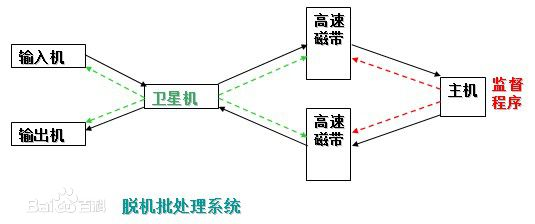
脱机批处理系统:20世纪60年代应用十分广泛,它极大缓解了人机矛盾及主机与外设的矛盾。IBM-7090/7094:配备的监督程序就是脱机批处理系统,是现代操作系统的原型。
不足:每次主机内存中仅存放一道作业,每当它运行期间发出输入/输出(I/O)请求后,高速的CPU便处于等待低速的I/O完成状态,致使CPU空闲。
为改善CPU的利用率,又引入了多道程序系统。
多道程序系统
多道程序设计技术
所谓多道程序设计技术,就是指允许多个程序同时进入内存并运行。即同时把多个程序放入内存,并允许它们交替在CPU中运行,它们共享系统中的各种硬、软件资源。当一道程序因I/O请求而暂停运行时,CPU便立即转去运行另一道程序。
单道程序的运行过程:
在A程序计算时,I/O空闲, A程序I/O操作时,CPU空闲(B程序也是同样);必须A工作完成后,B才能进入内存中开始工作,两者是串行的,全部完成共需时间=T1+T2。

多道程序的运行过程:
将A、B两道程序同时存放在内存中,它们在系统的控制下,可相互穿插、交替地在CPU上运行:当A程序因请求I/O操作而放弃CPU时,B程序就可占用CPU运行,这样 CPU不再空闲,而正进行A I/O操作的I/O设备也不空闲,显然,CPU和I/O设备都处于“忙”状态,大大提高了资源的利用率,从而也提高了系统的效率,A、B全部完成所需时间<<T1+T2。
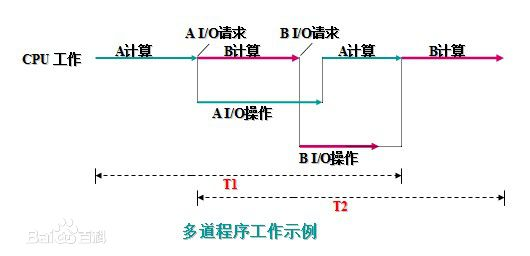
多道程序设计技术不仅使CPU得到充分利用,同时改善I/O设备和内存的利用率,从而提高了整个系统的资源利用率和系统吞吐量(单位时间内处理作业(程序)的个数),最终提高了整个系统的效率。
单处理机系统中多道程序运行时的特点:
(1)多道:计算机内存中同时存放几道相互独立的程序;
(2)宏观上并行:同时进入系统的几道程序都处于运行过程中,即它们先后开始了各自的运行,但都未运行完毕;
(3)微观上串行:实际上,各道程序轮流地用CPU,并交替运行。
多道程序系统的出现,标志着操作系统渐趋成熟的阶段,先后出现了作业调度管理、处理机管理、存储器管理、外部设备管理、文件系统管理等功能。
多道批处理系统
20世纪60年代中期,在前述的批处理系统中,引入多道程序设计技术后形成多道批处理系统(简称:批处理系统)。
它有两个特点:
(1)多道:系统内可同时容纳多个作业。这些作业放在外存中,组成一个后备队列,系统按一定的调度原则每次从后备作业队列中选取一个或多个作业进入内存运行,运行作业结束、退出运行和后备作业进入运行均由系统自动实现,从而在系统中形成一个自动转接的、连续的作业流。
(2)成批:在系统运行过程中,不允许用户与其作业发生交互作用,即:作业一旦进入系统,用户就不能直接干预其作业的运行。
批处理系统的追求目标:提高系统资源利用率和系统吞吐量,以及作业流程的自动化。
批处理系统的一个重要缺点:不提供人机交互能力,给用户使用计算机带来不便。
虽然用户独占全机资源,并且直接控制程序的运行,可以随时了解程序运行情况。但这种工作方式因独占全机造成资源效率极低。
一种新的追求目标:既能保证计算机效率,又能方便用户使用计算机。 20世纪60年代中期,计算机技术和软件技术的发展使这种追求成为可能。
分时系统
由于CPU速度不断提高和采用分时技术,一台计算机可同时连接多个用户终端,而每个用户可在自己的终端上联机使用计算机,好象自己独占机器一样。
分时技术:把处理机的运行时间分成很短的时间片,按时间片轮流把处理机分配给各联机作业使用。
若某个作业在分配给它的时间片内不能完成其计算,则该作业暂时中断,把处理机让给另一作业使用,等待下一轮时再继续其运行。由于计算机速度很快,作业运行轮转得很快,给每个用户的印象是,好象他独占了一台计算机。而每个用户可以通过自己的终端向系统发出各种操作控制命令,在充分的人机交互情况下,完成作业的运行。
具有上述特征的计算机系统称为分时系统,它允许多个用户同时联机使用计算机。
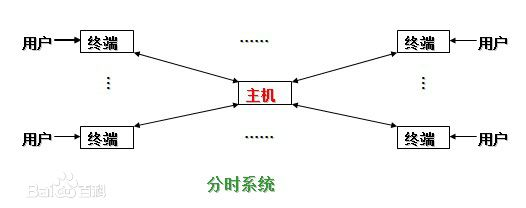
特点:
(1)多路性。若干个用户同时使用一台计算机。微观上看是各用户轮流使用计算机;宏观上看是各用户并行工作。
(2)交互性。用户可根据系统对请求的响应结果,进一步向系统提出新的请求。这种能使用户与系统进行人机对话的工作方式,明显地有别于批处理系统,因而,分时系统又被称为交互式系统。
(3)独立性。用户之间可以相互独立操作,互不干扰。系统保证各用户程序运行的完整性,不会发生相互混淆或破坏现象。
(4)及时性。系统可对用户的输入及时作出响应。分时系统性能的主要指标之一是响应时间,它是指:从终端发出命令到系统予以应答所需的时间。
分时系统的主要目标:对用户响应的及时性,即不至于用户等待每一个命令的处理时间过长。
分时系统可以同时接纳数十个甚至上百个用户,由于内存空间有限,往往采用对换(又称交换)方式的存储方法。即将未“轮到”的作业放入磁盘,一旦“轮到”,再将其调入内存;而时间片用完后,又将作业存回磁盘(俗称“滚进”、“滚出“法),使同一存储区域轮流为多个用户服务。
多用户分时系统是当今计算机操作系统中最普遍使用的一类操作系统。
实时系统
虽然多道批处理系统和分时系统能获得较令人满意的资源利用率和系统响应时间,但却不能满足实时控制与实时信息处理两个应用领域的需求。于是就产生了实时系统,即系统能够及时响应随机发生的外部事件,并在严格的时间范围内完成对该事件的处理。
实时系统在一个特定的应用中常作为一种控制设备来使用。
实时系统可分成两类:
(1)实时控制系统。当用于飞机飞行、导弹发射等的自动控制时,要求计算机能尽快处理测量系统测得的数据,及时地对飞机或导弹进行控制,或将有关信息通过显示终端提供给决策人员。当用于轧钢、石化等工业生产过程控制时,也要求计算机能及时处理由各类传感器送来的数据,然后控制相应的执行机构。
(2)实时信息处理系统。当用于预定飞机票、查询有关航班、航线、票价等事宜时,或当用于银行系统、情报检索系统时,都要求计算机能对终端设备发来的服务请求及时予以正确的回答。此类对响应及时性的要求稍弱于第一类。
实时操作系统的主要特点:
(1)及时响应。每一个信息接收、分析处理和发送的过程必须在严格的时间限制内完成。
(2)高可靠性。需采取冗余措施,双机系统前后台工作,也包括必要的保密措施等。
操作系统发展图谱
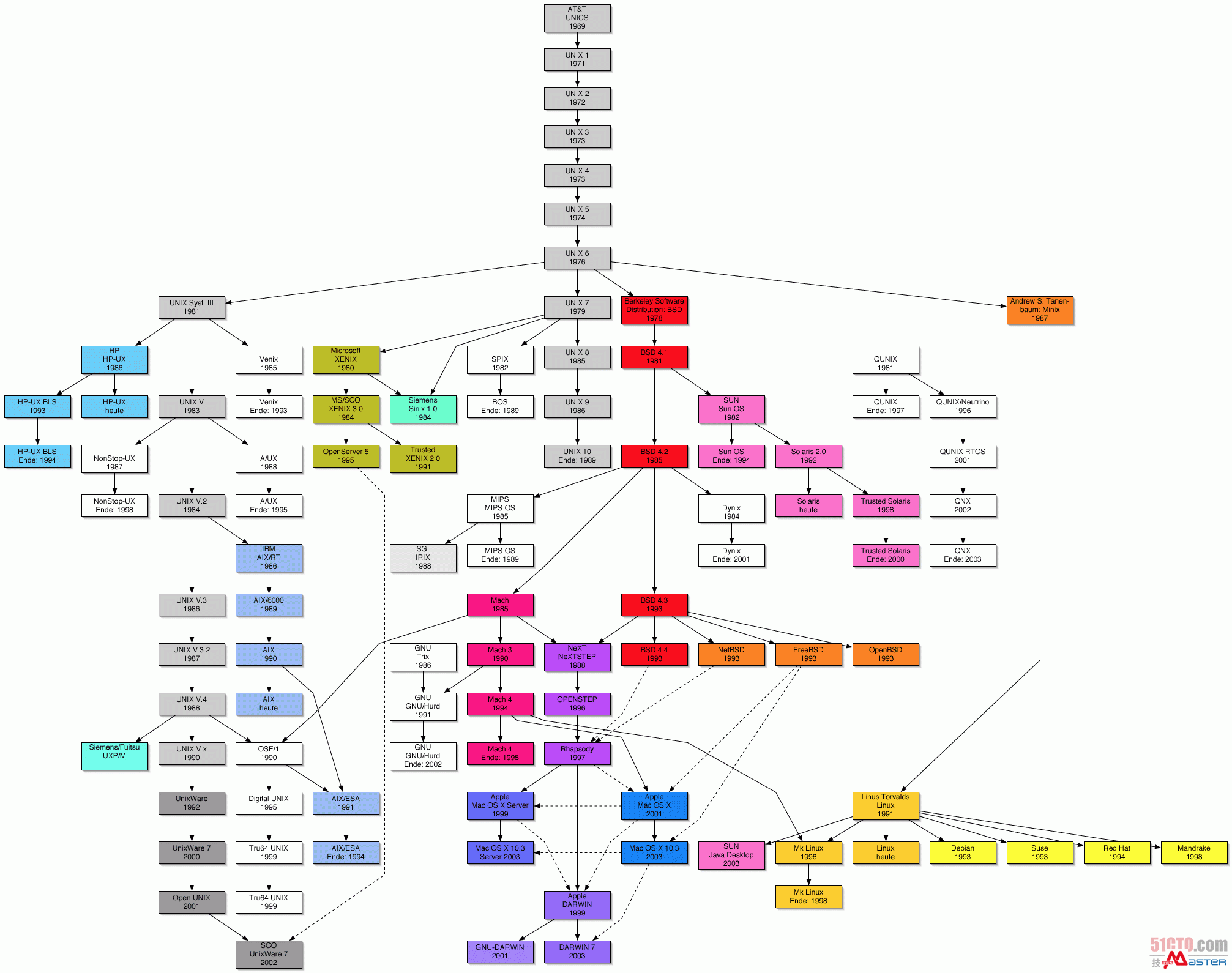
什么是进程?
An executing instance of a program is called a process.
Each process provides the resources needed to execute a program. A process has a virtual address space, executable code, open handles to system objects, a security context, a unique process identifier, environment variables, a priority class, minimum and maximum working set sizes, and at least one thread of execution. Each process is started with a single thread, often called the primary thread, but can create additional threads from any of its threads.
程序并不能单独运行,只有将程序装载到内存中,系统为它分配资源才能运行,而这种执行的程序就称之为进程。程序和进程的区别就在于:程序是指令的集合,它是进程运行的静态描述文本;进程是程序的一次执行活动,属于动态概念。
在多道编程中,我们允许多个程序同时加载到内存中,在操作系统的调度下,可以实现并发地执行。这是这样的设计,大大提高了CPU的利用率。进程的出现让每个用户感觉到自己独享CPU,因此,进程就是为了在CPU上实现多道编程而提出的。
有了进程为什么还要线程?
进程有很多优点,它提供了多道编程,让我们感觉我们每个人都拥有自己的CPU和其他资源,可以提高计算机的利用率。很多人就不理解了,既然进程这么优秀,为什么还要线程呢?其实,仔细观察就会发现进程还是有很多缺陷的,主要体现在两点上:
-
进程只能在一个时间干一件事,如果想同时干两件事或多件事,进程就无能为力了。
-
进程在执行的过程中如果阻塞,例如等待输入,整个进程就会挂起,即使进程中有些工作不依赖于输入的数据,也将无法执行。
例如,我们在使用qq聊天, qq做为一个独立进程如果同一时间只能干一件事,那他如何实现在同一时刻 即能监听键盘输入、又能监听其它人给你发的消息、同时还能把别人发的消息显示在屏幕上呢?你会说,操作系统不是有分时么?但我的亲,分时是指在不同进程间的分时呀, 即操作系统处理一会你的qq任务,又切换到word文档任务上了,每个cpu时间片分给你的qq程序时,你的qq还是只能同时干一件事呀。
再直白一点, 一个操作系统就像是一个工厂,工厂里面有很多个生产车间,不同的车间生产不同的产品,每个车间就相当于一个进程,且你的工厂又穷,供电不足,同一时间只能给一个车间供电,为了能让所有车间都能同时生产,你的工厂的电工只能给不同的车间分时供电,但是轮到你的qq车间时,发现只有一个干活的工人,结果生产效率极低,为了解决这个问题,应该怎么办呢?。。。。没错,你肯定想到了,就是多加几个工人,让几个人工人并行工作,这每个工人,就是线程!
什么是线程?
线程是操作系统能够进行运算调度的最小单位。它被包含在进程之中,是进程中的实际运作单位。一条线程指的是进程中一个单一顺序的控制流,一个进程中可以并发多个线程,每条线程并行执行不同的任务
A thread is an execution context, which is all the information a CPU needs to execute a stream of instructions.
Suppose you're reading a book, and you want to take a break right now, but you want to be able to come back and resume reading from the exact point where you stopped. One way to achieve that is by jotting down the page number, line number, and word number. So your execution context for reading a book is these 3 numbers.
If you have a roommate, and she's using the same technique, she can take the book while you're not using it, and resume reading from where she stopped. Then you can take it back, and resume it from where you were.
Threads work in the same way. A CPU is giving you the illusion that it's doing multiple computations at the same time. It does that by spending a bit of time on each computation. It can do that because it has an execution context for each computation. Just like you can share a book with your friend, many tasks can share a CPU.
On a more technical level, an execution context (therefore a thread) consists of the values of the CPU's registers.
Last: threads are different from processes. A thread is a context of execution, while a process is a bunch of resources associated with a computation. A process can have one or many threads.
Clarification: the resources associated with a process include memory pages (all the threads in a process have the same view of the memory), file descriptors (e.g., open sockets), and security credentials (e.g., the ID of the user who started the process).
进程与线程的区别?
- Threads share the address space of the process that created it; processes have their own address space.
- Threads have direct access to the data segment of its process; processes have their own copy of the data segment of the parent process.
- Threads can directly communicate with other threads of its process; processes must use interprocess communication to communicate with sibling processes.
- New threads are easily created; new processes require duplication of the parent process.
- Threads can exercise considerable control over threads of the same process; processes can only exercise control over child processes.
- Changes to the main thread (cancellation, priority change, etc.) may affect the behavior of the other threads of the process; changes to the parent process does not affect child processes.